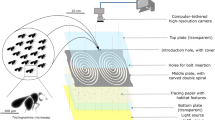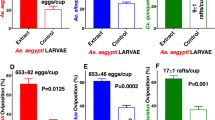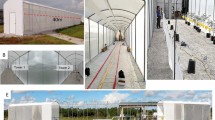Abstract
LOCUST swarms may be sprayed with insecticides when the insects are settled or in flight. Techniques have been developed for the estimation of the amount of spray collected by individual locusts1–4, and fundamental to their interpretation is the spraycollecting area of a locust. Two areas have been used for calculations: the plan area for settled locusts1 2, reduced to allow for the less vulnerable parts, and the ‘horizontal equivalent area’ for flying locusts3,4, defined as the horizontal plane area which, when passed through a given spray of droplets with the same velocity as a locust, collects the same number of droplets as the locust. The plan area of the desert locust, Schistocerca gregaria (Forsk.), is about 6½ cm.2, and the horizontal equivalent area has been found experimentally to vary greatly with drop size, increasing from 30 cm.2 for droplets 300µ in diameter to 450 cm.2 for 50µ drops5. The collecting surface of a settled locust approximates to the plan area when the drops are falling nearly vertically, but at shallow angles of approach the quantity of spray deposited on the locust is many times that estimated from area dosage and plan area.
This is a preview of subscription content, access via your institution
Access options
Subscribe to this journal
Receive 51 print issues and online access
$199.00 per year
only $3.90 per issue
Buy this article
- Purchase on Springer Link
- Instant access to full article PDF
Prices may be subject to local taxes which are calculated during checkout
Similar content being viewed by others
References
Ward, J., in Gunn, D. L., Lea, H. A. F., et al., “Locust Control by Aircraft in Tanganyika” (Anti-Locust Research Centre, London, 1948).
Gunn, D. L., J. Sci. Food Agric., 3, 289 (1952).
Sawyer, K. F., Bull. Ent. Res., 41, 439 (1950).
Rainey, R. C., and Sayer, H. J., Nature, 172, 224 (1953).
Wootten, N. W., and Sawyer, K. F., Bull. Ent. Res., 45, 177 (1954).
Author information
Authors and Affiliations
Rights and permissions
About this article
Cite this article
MACCUAIG, R. Spray-collecting Area of Locusts and their Susceptibility to Insecticides. Nature 182, 478–479 (1958). https://doi.org/10.1038/182478a0
Issue Date:
DOI: https://doi.org/10.1038/182478a0
Comments
By submitting a comment you agree to abide by our Terms and Community Guidelines. If you find something abusive or that does not comply with our terms or guidelines please flag it as inappropriate.



